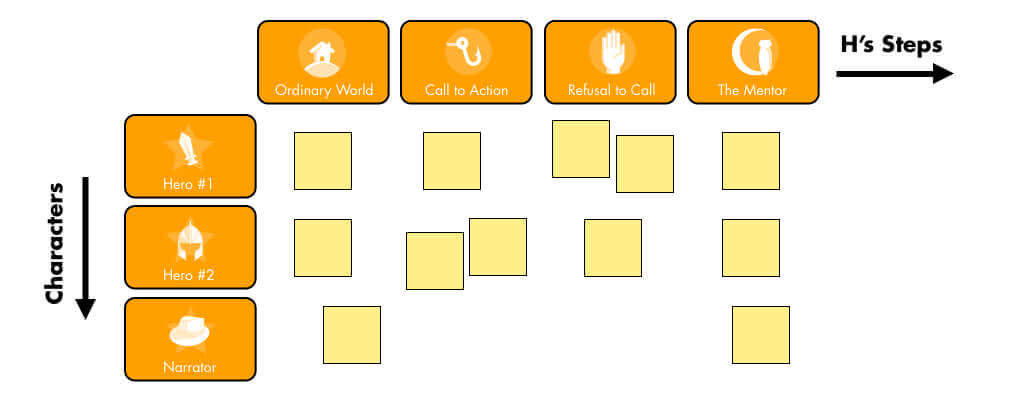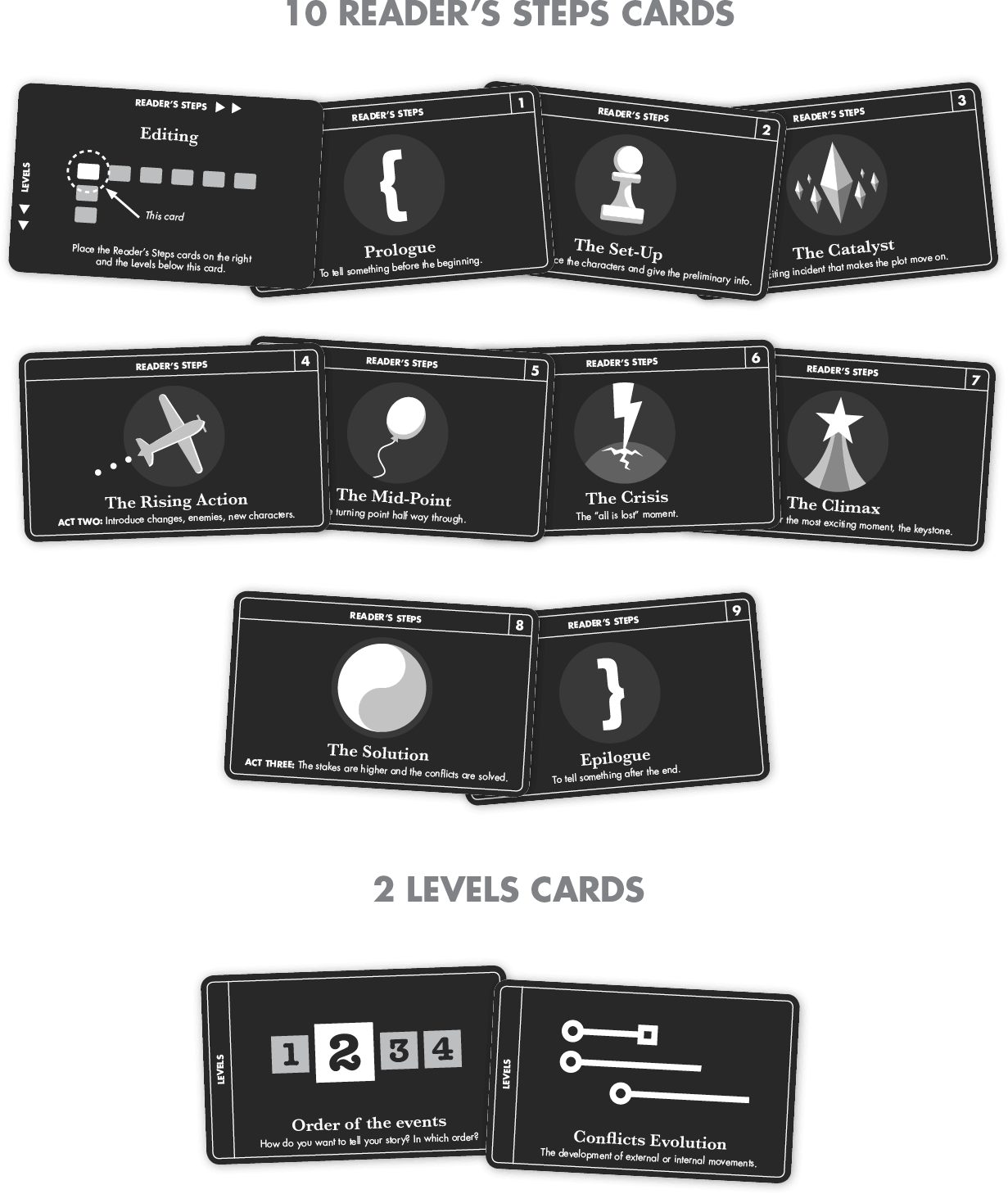Composition
In the Fabula deck you'll find:
- 11 ASSETS cards;
- 18 HERO'S DEVELOPMENT cards;
- 11 EDITING cards;
- a booklet with instructions.

The Assets
The ASSETS cards are the blue cards in your deck and they help you organise the main ingredients of your story.
They give you the right questions, for example:
- Who's the hero?
- Who are the allies?
- And the enemies?
- What's the concept of the story?
Use the ASSETS cards to build the universe of your story, sticking notes, maps, images, and whatever else comes to your mind around the cards.
The Hero's Development Cards
The HERO STRUCTURE is a pattern that can be found in many different stories. It could be considered as an archetypical path that underlies every story told, first studied by Vladimir Propp, then by lots of other scholars such as Joseph Campbell, David Adams, Christopher Vogler.
There are 15 cards which represent the HERO’S STEPS, the typical steps of the characters. If you think about it you can find them in most movies and books:
- ORDINARY WORLD: the hero is still in his familiar environment– Neo is an unsatisfied hacker looking for an answer;
- CALL TO ACTION: something happens to change the balance – He follows the "white rabbit";
- REFUSAL OF THE CALL: the hero is hesitant– He should climb the roof but he's afraid;
- MEETING THE MENTOR: he meets a mentor who guides him – He sees Morpheus and he's offered the two pills;
- CROSSING THE FIRST THRESHOLD: he finally decides to enter the new world – He chooses the right pill and the real action begins!
Then we have the meeting with ALLIES and ENEMIES, we have TRIALS, the FULFILLMENT of the hero, the ORDEAL in which he gets what he is looking for and the story develops until the RESOLUTION, good or bad.
Although most stories have just one hero, you will have three CHARACTERS cards. By placing them on the left of your HERO’S STEPS cards, you will be able to manage the development of three different characters.

The Editing Cards
And what If you have lots of characters or you want to play with the time of your story? Think about the movies by Christopher Nolan, for example, or the complexity of novels like Game of Thrones.
The EDITING cards are based on the THREE ACT STRUCTURE and with them you can act like a director who orders the events of your story. It's like a recap focused on the audience:
- Which part of the story should I tell at the beginning?
- Which part of which character is the event that catalyses the whole plot?
- When do I want the audience to reach its most emotional moment?
